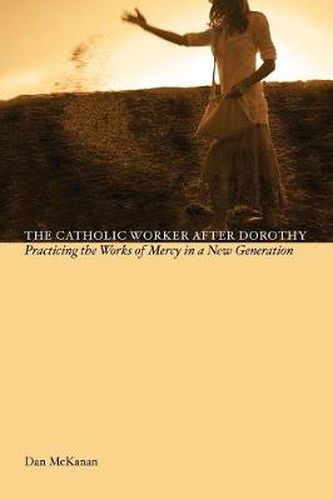Readings Newsletter
Become a Readings Member to make your shopping experience even easier.
Sign in or sign up for free!
You’re not far away from qualifying for FREE standard shipping within Australia
You’ve qualified for FREE standard shipping within Australia
The cart is loading…






This title is printed to order. This book may have been self-published. If so, we cannot guarantee the quality of the content. In the main most books will have gone through the editing process however some may not. We therefore suggest that you be aware of this before ordering this book. If in doubt check either the author or publisher’s details as we are unable to accept any returns unless they are faulty. Please contact us if you have any questions.
When Dorothy Day died in 1980, many people assumed that the movement she had founded would gradually fade away. But the current state of the Catholic Worker movement-more than two hundred active communities-reflects Day’s fierce attention to the present moment and the local community. These communities have prospered, according to Dan McKanan, because Day and Maurin provided them with a blueprint that emphasized creativity more than rigid adherence to a single model. Day wanted Catholic Worker communities to be free to shape their identities around the local needs and distinct vocations of their members. Open to single people and families, in urban and rural areas, the Catholic Worker and its core mission have proven to be both resilient and flexible. The Catholic Worker after Dorothy explores the reality of Catholic Worker communities today. What holds them together? How have they developed to incorporate families? How do Catholic Workers relate to the institutional church and to other radical communities? What impact does the movement have on the world today?
$9.00 standard shipping within Australia
FREE standard shipping within Australia for orders over $100.00
Express & International shipping calculated at checkout
This title is printed to order. This book may have been self-published. If so, we cannot guarantee the quality of the content. In the main most books will have gone through the editing process however some may not. We therefore suggest that you be aware of this before ordering this book. If in doubt check either the author or publisher’s details as we are unable to accept any returns unless they are faulty. Please contact us if you have any questions.
When Dorothy Day died in 1980, many people assumed that the movement she had founded would gradually fade away. But the current state of the Catholic Worker movement-more than two hundred active communities-reflects Day’s fierce attention to the present moment and the local community. These communities have prospered, according to Dan McKanan, because Day and Maurin provided them with a blueprint that emphasized creativity more than rigid adherence to a single model. Day wanted Catholic Worker communities to be free to shape their identities around the local needs and distinct vocations of their members. Open to single people and families, in urban and rural areas, the Catholic Worker and its core mission have proven to be both resilient and flexible. The Catholic Worker after Dorothy explores the reality of Catholic Worker communities today. What holds them together? How have they developed to incorporate families? How do Catholic Workers relate to the institutional church and to other radical communities? What impact does the movement have on the world today?